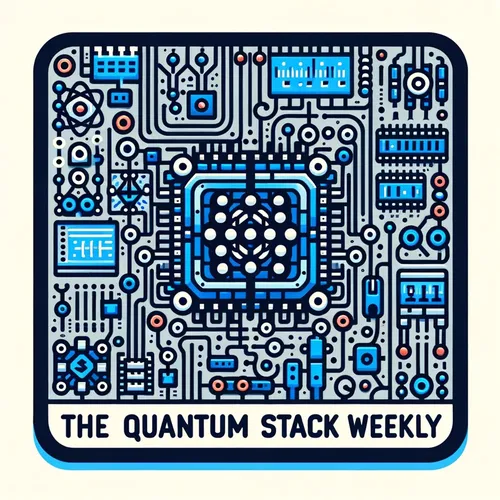HyperQ: Quantum's Power Grid Moment - Parallel Processing Unleashed
- Author
- Quiet. Please
- Published
- Tue 19 Aug 2025
- Episode Link
- https://www.spreaker.com/episode/hyperq-quantum-s-power-grid-moment-parallel-processing-unleashed--67443572
This is your The Quantum Stack Weekly podcast.
Picture this: I’m maneuvering through a data center in Midtown, the air thick with the hum of liquid-cooled servers and—hidden among them—the barely perceptible chill of a quantum processor. My name is Leo, Learning Enhanced Operator, and today’s episode of The Quantum Stack Weekly begins with a seismic shift in the quantum landscape—one that happened just yesterday. If you blinked, you might’ve missed it: Columbia Engineering has unleashed HyperQ, the first cloud-style virtualization platform that allows multiple users to share a single quantum processor at the same time. This isn’t just a marginal convenience—this is the start of quantum computing’s “power grid” moment.
Let’s put this in context. Until now, quantum computers have been like single-track railroads: Only one train—one program—could run at a time. Even if only a fraction of the quantum hardware was working, the rest sat idle, waiting as researchers queued up experiments like travelers at a bus stop. It was deeply inefficient, given that every minute of quantum computation costs as much as a luxury apartment in Manhattan.
HyperQ slices that hardware into virtual environments, letting multiple researchers, developers, and even AIs run different jobs all at once. Imagine you’re at a busy airport: Instead of a single runway, HyperQ gives you a constellation of landing strips, each serving flights in parallel—no more gridlock, no more wasted potential. Quantum time suddenly becomes a shared resource, and Columbia’s Tao Zhang, the lead architect of HyperQ, called it “a game-changer for tackling the world’s most complex challenges.”
How does it work under the hood? HyperQ builds a resource scheduler atop quantum circuits, intercepting job requests, allocating virtual qubits, and orchestrating execution so that each user’s program gets fidelity without stepping on the state of another’s. It plays nicely with existing quantum software stacks—Qiskit, Cirq, PennyLane—so the barrier to entry drops. For quantum cloud providers like IBM and Amazon, this means rising utilization rates and lower costs, all while keeping physical expansion in check.
Now, here’s the parallel I see: This week, as the world watches networks respond to everything from natural disaster relief to the Olympics’ choreography of simultaneous events, virtualization offers a model for resilience and agility. Just as emergency responders or athletes share limited infrastructure, quantum hardware now gains the same kind of dynamic scalability.
The implications are vast. More teams can simulate new drugs, optimize global supply lines, or model financial risk in real time. This move democratizes quantum access—accelerating the cycle of discovery, not by just a step, but by a quantum leap.
If you have questions, or want to pitch a topic for a future episode, email me at [email protected]. Don’t forget to subscribe to The Quantum Stack Weekly—this has been a Quiet Please Production, and for more, check out quiet please dot AI. Until next time, stay superposed.
For more http://www.quietplease.ai
Get the best deals https://amzn.to/3ODvOta
